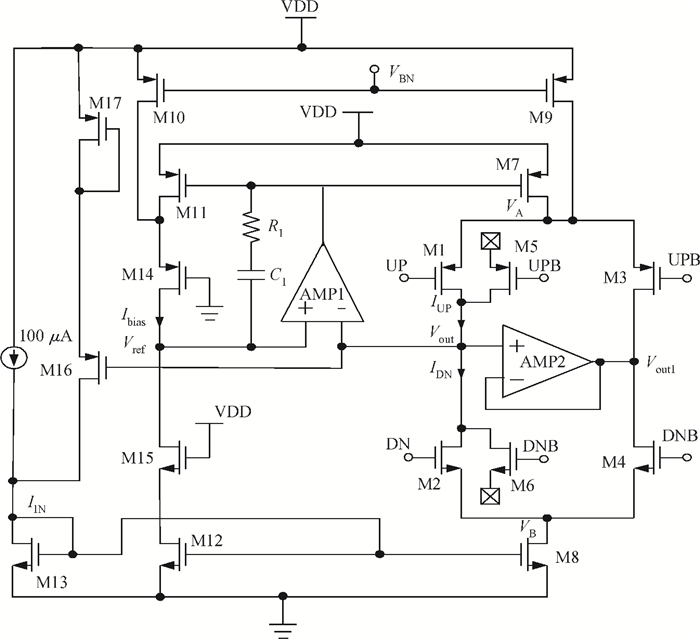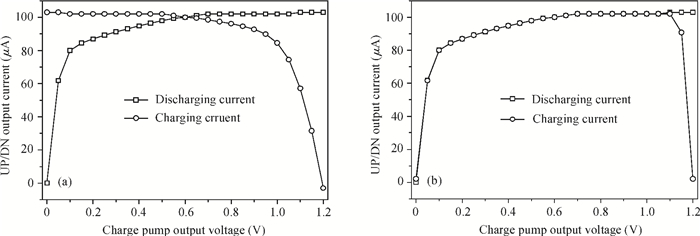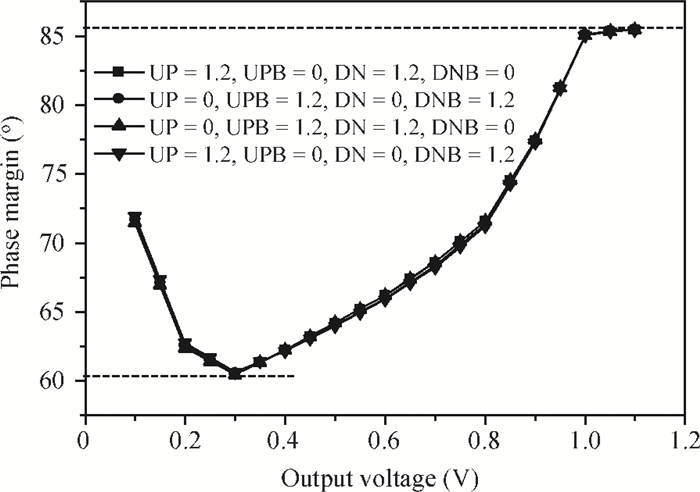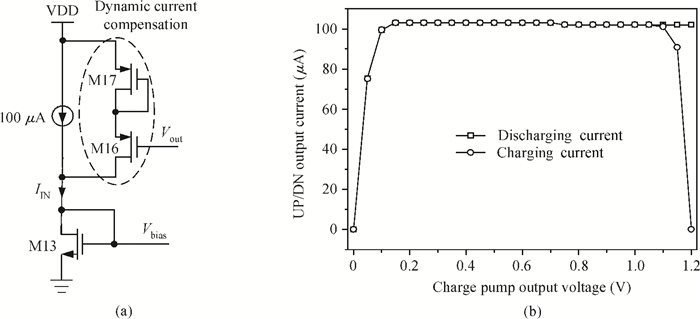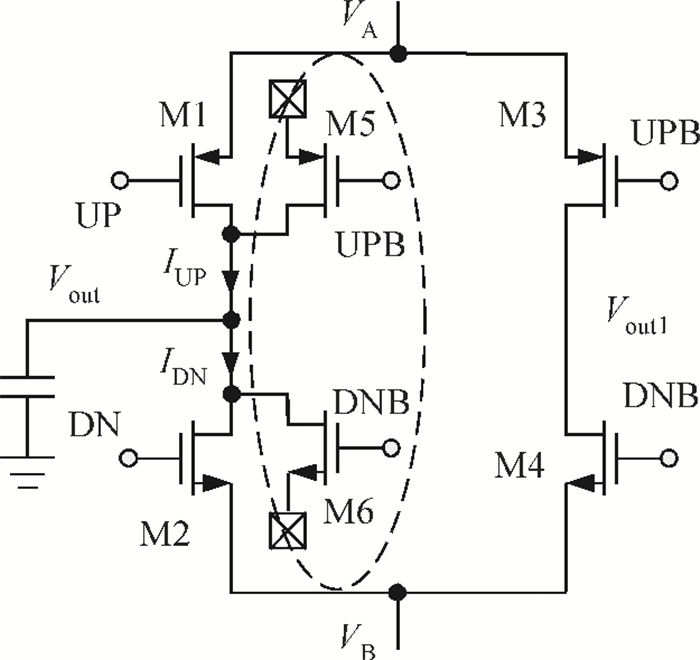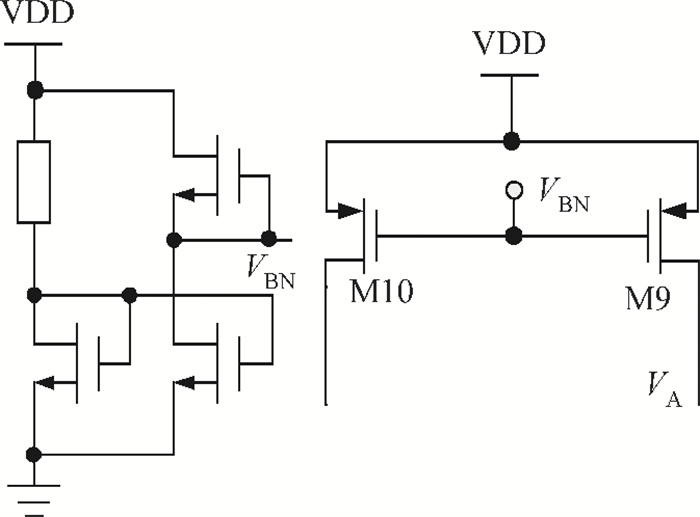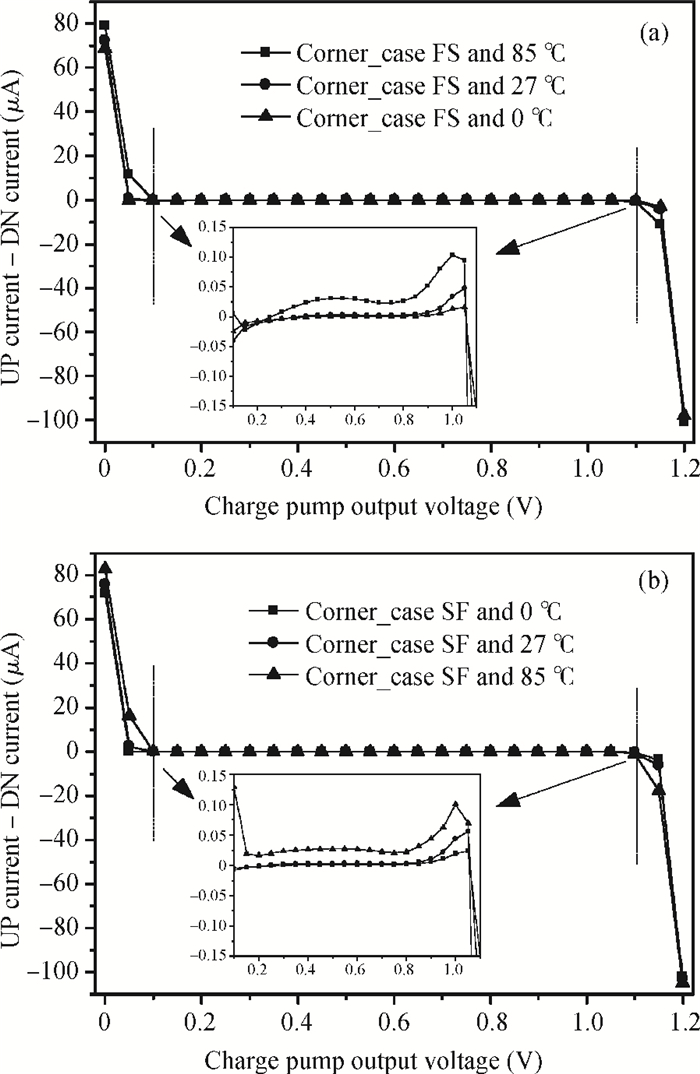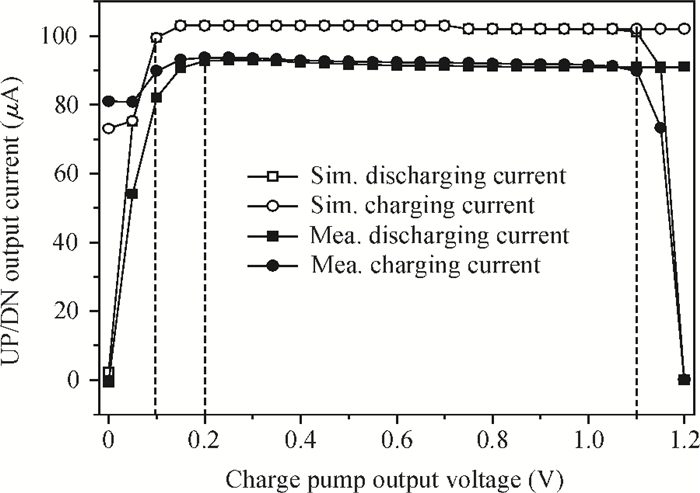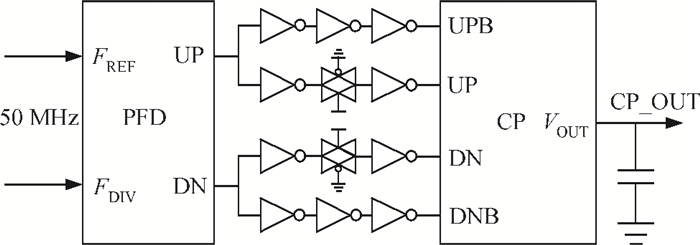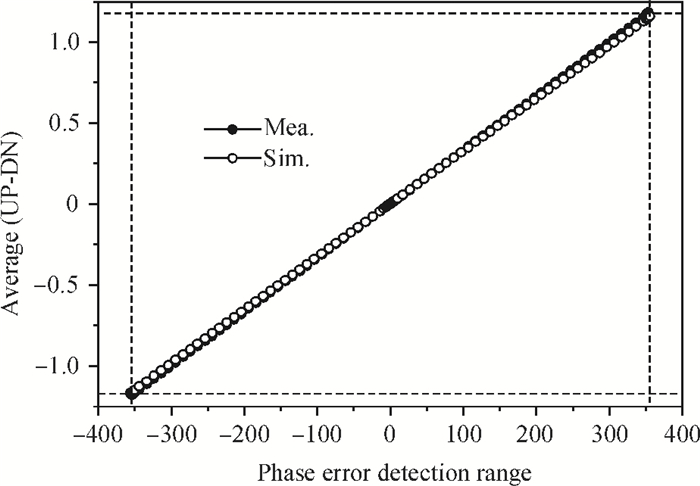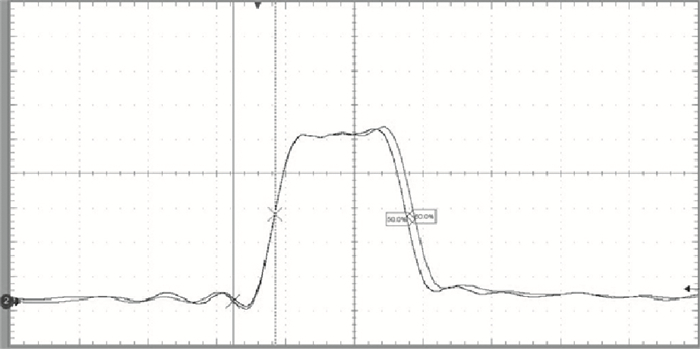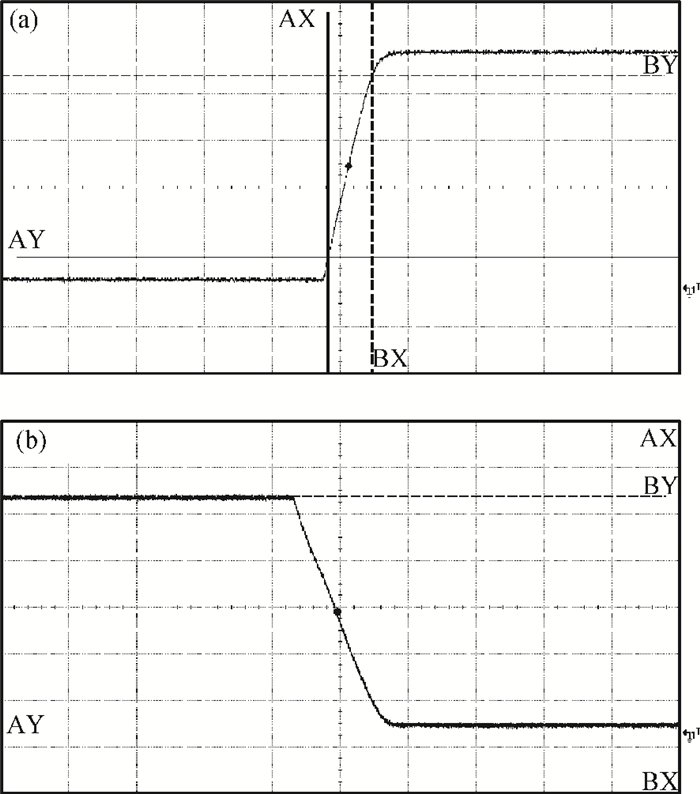| Citation: |
Faen Liu, Zhigong Wang, Zhiqun Li, Qin Li, Sheng Chen. Design of improved CMOS phase-frequency detector and charge-pump for phase-locked loop[J]. Journal of Semiconductors, 2014, 35(10): 105006. doi: 10.1088/1674-4926/35/10/105006
****
F E Liu, Z G Wang, Z Q Li, Q Li, S Chen. Design of improved CMOS phase-frequency detector and charge-pump for phase-locked loop[J]. J. Semicond., 2014, 35(10): 105006. doi: 10.1088/1674-4926/35/10/105006.
|
Design of improved CMOS phase-frequency detector and charge-pump for phase-locked loop
DOI: 10.1088/1674-4926/35/10/105006
More Information
-
Abstract
Two essential blocks for the PLLs based on CP, a phase-frequency detector (PFD) and an improved current steering charge-pump (CP), are developed. The mechanisms for widening the phase error detection range and eliminating the dead zone are analyzed and applied in our design to optimize the proposed PFD. To obtain excellent current matching and minimum current variation over a wide output voltage range, an improved structure for the proposed CP is developed by fully utilizing many additional sub-circuits. Implemented in a standard 90-nm CMOS process, the proposed PFD achieves a phase error detection range from -354 ° to 354 ° and the improved CP demonstrates a current mismatch of less than 1.1% and a pump-current variation of 4% across the output voltage, swinging from 0.2 to 1.1 V, and the power consumption is 1.3 mW under a 1.2-V supply. -
References
[1] Lee J Y, Lee S H, Haecheon K, et al. 28.5-32-GHz fast settling multichannel PLL synthesizer for 60-GHz WPAN radio. IEEE Microwave Theory Tech, 2008, 56(5):1234 doi: 10.1109/TMTT.2008.920179[2] Kailuke A C, Agrawal P, Kshirsagar R V. Design of phase frequency detector and charge pump for low voltage high frequency PLL. Electronic Systems, Signal Processing and Computing Technologies, 2014:74 http://ieeexplore.ieee.org/abstract/document/6745349/[3] Anush K N K, Mangalam H, Dharani V A, et al. Comparison and analysis of various PFD architecture for a phase locked loop design. Computational Intelligence and Computing Research (ICCIC), 2013:1 http://ieeexplore.ieee.org/document/6724238/[4] Chen W H, Inerowicz M E, Jung B. Phase frequency detector with minimal blind zone for fast frequency acquisition. IEEE Trans Circuits Syst Ⅱ:Express Briefs, 2010, 57(12):936 doi: 10.1109/TCSII.2010.2087951[5] Han S Y, Jin J, Mao C. A full-swing charge pump with zero phase offset. Microelectron Electron, 2009:298 http://ieeexplore.ieee.org/document/5397388/authors[6] Liu P, Sun P, Jung J, et al. PLL charge pump with adaptive body-bias compensation for minimum current variation. Electron Lett, 2012, 48(1):16 doi: 10.1049/el.2011.2835[7] Feng S, Tong H T, Silva-Martinez J, et al. Design and analysis of an ultra-speed glitch-free fully differential charge pump with minimum output current variation and accurate matching. IEEE Trans Circuits Syst Ⅱ:Express Briefs, 2006, 53(9):843 doi: 10.1109/TCSII.2006.879100[8] Hwang M S, Kim J, Jeong D K. Reduction of pump current mismatch in charge-pump PLL. Electron Lett, 2009, 45(3):135 doi: 10.1049/el:20092727[9] Zheng S S, Li Z Q. A novel CMOS charge pump with high performance for phase-locked loops synthesizer. IEEE Commun Technol, 2011:1062 http://ieeexplore.ieee.org/document/6158043/?reload=true&arnumber=6158043&punumber%3D6153171] -
Proportional views





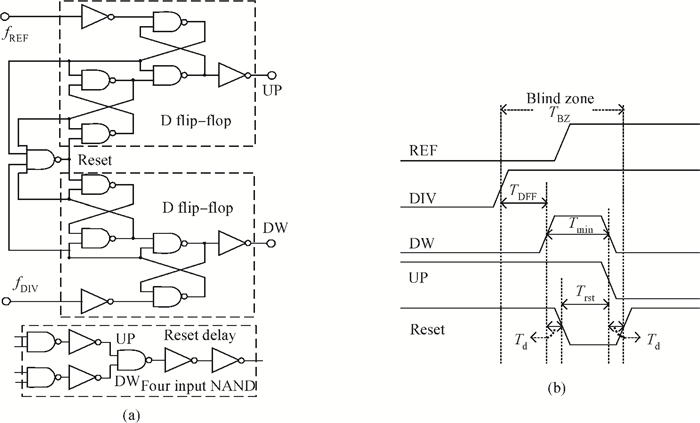
 DownLoad:
DownLoad:
